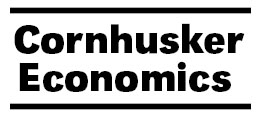Agricultural Economics, Department of

Cornhusker Economics
Date of this Version
12-16-2020
Document Type
Newsletter Issue
Abstract
A marketing strategy focusing on prices from the most re-cent past, indirectly gives little or no weight to all of the other possible price outcomes. While it is intuitive that the most recent prices are more likely to play a role in our decision-making process, there are other price events that can happen. The seasonal price path from the 2019/2020 crop year was nothing like we have recently experienced. Sup-pose we entered the 2020’s marketing decision using a seasonal approach that considers only the average price series over the past 5 years (2015-19 average), Figure 1. The seasonal average indicates prices at harvest are among the lowest with early summer prices higher. The 2020 price series turned out to be nothing like the previous five-year average. This may have left you wondering what happened and perhaps in an unexpected financial position. This illustration shows us that recent experience does not give us enough information to construct an appropriate risk management decision framework. Price outcomes that have not yet been experienced will likely be the ones that severely hurt the financial health of a farming operation. A better understanding of the price generating process and an improved risk management decision framework are required.


Comments
Copyright 2020 University of Nebraska.